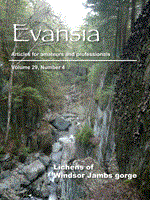Unlike deciduous plants, lichen thalli over time accumulate elements present in the air, such as lead, zinc, sulfur, nitrogen, and radionuclides in their tissues. Therefore, lichens may constitute ideal bioindicators to monitor air quality in both urban and rural environments. We evaluated the impact of air pollution on lichens in and around the city of Monroe, Louisiana. Lichen discs of Ramalina stenospora, Physcia sorediosa, and Parmotrema perforatum were transplanted from the core of a wildlife management area (lower levels of air pollution) to areas of potentially higher levels of air pollution and monitored over time. We measured percent bleaching, chlorophyll content and morphological characteristics of the thalli over a 12-month period. Percent bleaching, chlorophyll content and morphological characteristics of the thalli differed significantly over time among sites with contrasting pollution levels. Therefore, variables such as percent bleaching and chlorophyll content of lichen thalli, which are relatively easily determined, can be successfully used to estimate air quality in an area.
How to translate text using browser tools
1 December 2011
Effect of air Pollution on Chlorophyll Content and Lichen Morphology in Northeastern Louisiana
Jessica M. Wakefield,
Joydeep Bhattacharjee
ACCESS THE FULL ARTICLE

Evansia
Vol. 29 • No. 4
December 2012
Vol. 29 • No. 4
December 2012
Bioindicator
bleaching
Parmotrema
Physcia
Ramalina
transplant




